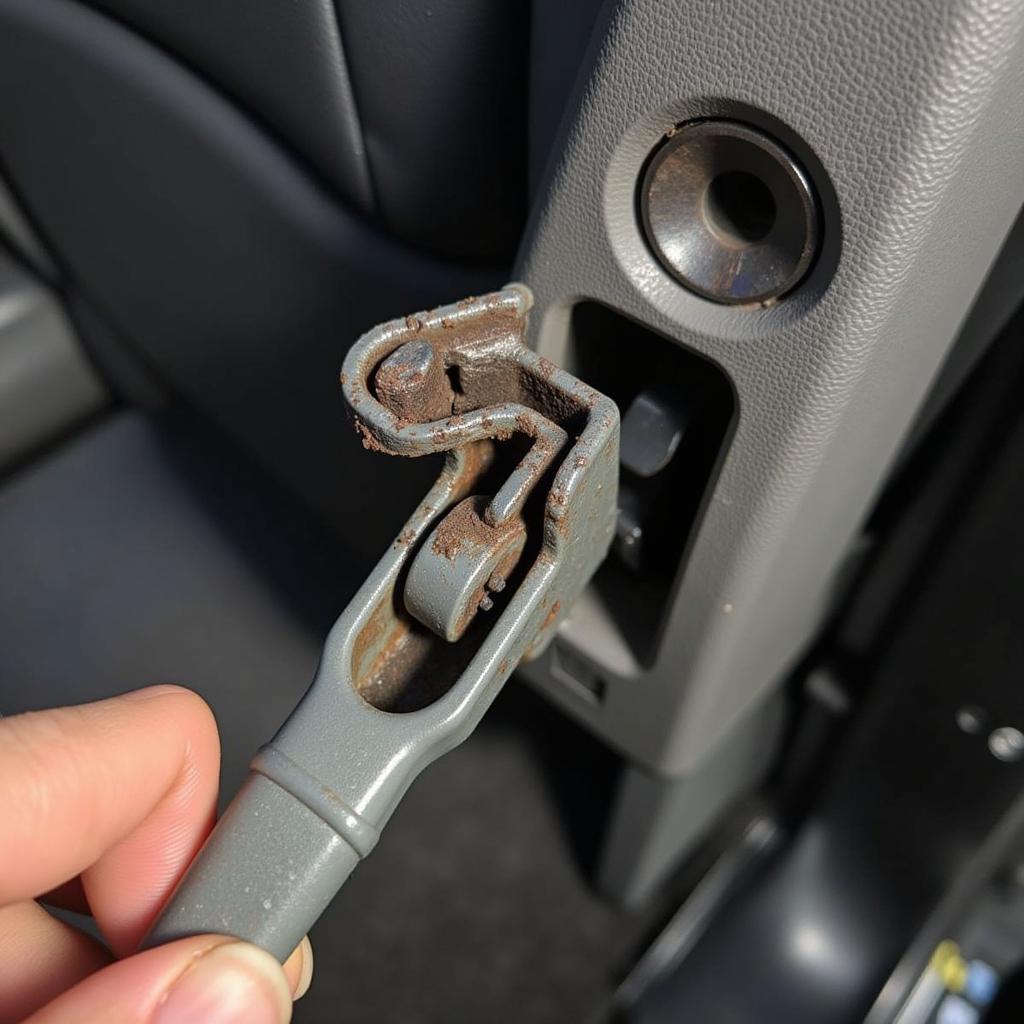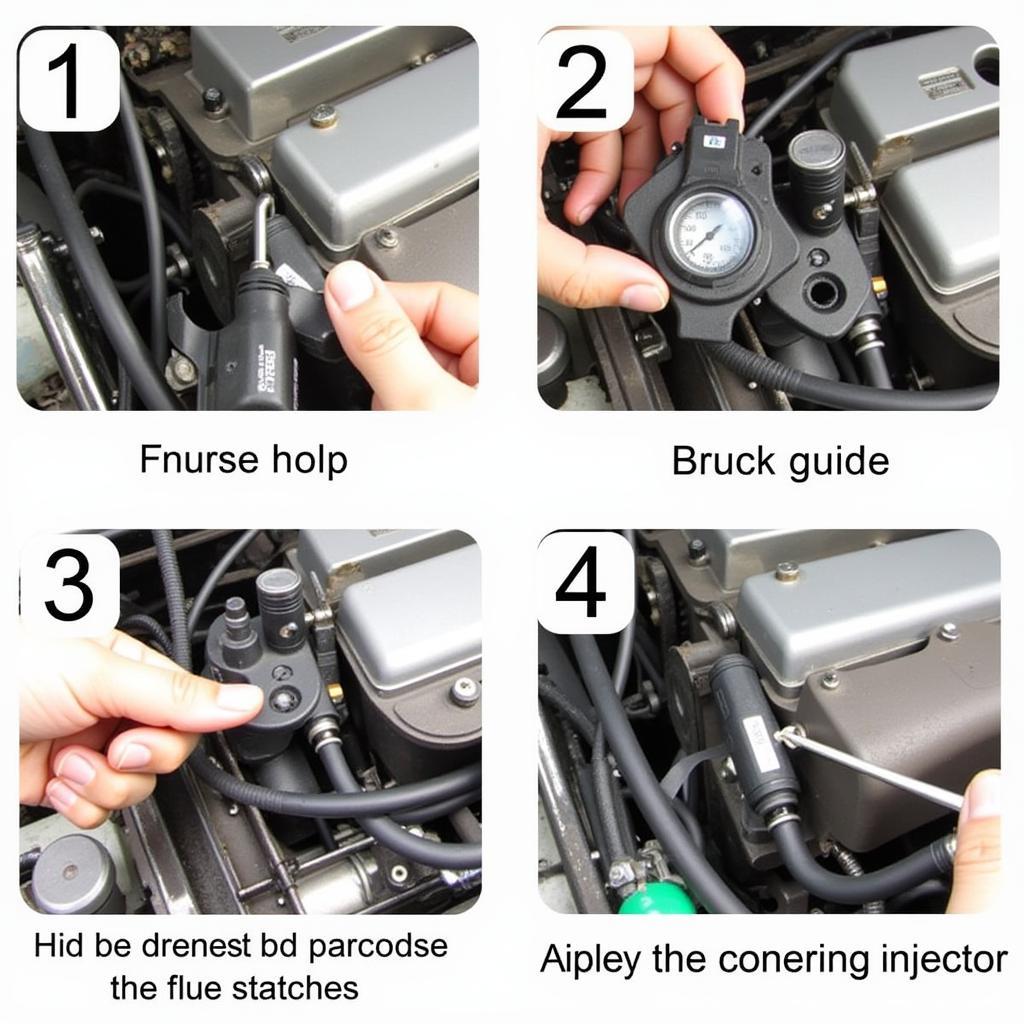The world of Formula 1 racing is no stranger to technical issues, and the Mercedes-AMG Petronas team has faced their fair share in recent seasons. From porpoising woes to engine gremlins, the quest for an “F1 Mercedes fix” has been a recurring theme. But what are these issues, how are they identified, and what solutions are employed to get these high-performance machines back on track?
The Need for Speed, and Fixes: Common F1 Mercedes Issues
Modern F1 cars are marvels of engineering, pushing the boundaries of technology and performance. However, this complexity can lead to unforeseen issues. One recent example is the infamous “porpoising” phenomenon, where aerodynamic instability causes the car to bounce violently at high speeds. This issue plagued the Mercedes W13 in 2022, hampering their performance significantly.
f1-car-porpoising|f1 porpoising|A Formula 1 car experiencing porpoising on a straight at high speed.
Beyond porpoising, issues like engine mapping errors, sensor malfunctions, and even software glitches can bring an F1 car to a grinding halt. Identifying these issues quickly and accurately is crucial in the fast-paced world of Grand Prix racing.
Diagnosing the Beast: Identifying F1 Mercedes Issues
Much like a high-tech medical examination, diagnosing problems in an F1 car relies on sophisticated telemetry and data analysis. Trackside engineers monitor a constant stream of data from hundreds of sensors positioned throughout the car, measuring everything from tire temperatures to engine performance.
“The sheer volume of data generated by an F1 car is staggering,” notes Dr. Emily Carter, a motorsport engineering expert. “Identifying anomalies in real-time requires advanced algorithms and a deep understanding of the car’s systems.”
f1-engineers-analyzing-data|f1 data analysis|A team of Formula 1 engineers huddled over computer screens analyzing telemetry data.
Specialized software plays a crucial role in processing this data, allowing engineers to pinpoint the root cause of a problem. This information is then relayed to the team in the pit lane and to the driver, guiding them towards a potential solution.
Tools of the Trade: Essential Equipment for F1 Mercedes Fixes
Fixing an F1 car isn’t as simple as tightening a few bolts. The tools and equipment used are as advanced as the cars themselves. Here are a few key components:
- High-Speed Cameras: Capturing thousands of frames per second, these cameras allow engineers to analyze minute details of the car’s behavior, such as tire deformation or suspension movement.
- Thermal Imaging: This technology helps identify overheating components, crucial for diagnosing engine or brake issues.
- Diagnostic Software: Powerful software programs analyze telemetry data, run simulations, and aid in pinpointing the source of malfunctions. You can learn more about professional-grade diagnostic software solutions on CARDIAGTECH.
f1-mechanics-pit-stop|f1 pit stop|A team of Formula 1 mechanics working on a car during a pit stop, with specialized tools.
From Diagnosis to Solution: Implementing the Fix
Once an issue is identified, the race against time begins. Depending on the problem’s complexity, solutions can range from quick adjustments to complete component replacements.
For instance, adjusting the car’s setup to mitigate porpoising might involve tweaking the ride height, wing angles, or suspension settings. More serious issues, like a faulty sensor, might require a swift replacement using specialized tools and procedures.
FAQs About F1 Mercedes Fixes
Here are some common questions about how F1 teams like Mercedes address technical issues:
Q: Can software updates fix problems during a race?
A: Yes, teams can upload software updates remotely to adjust engine mapping, fuel consumption, or even aerodynamic settings.
Q: How do teams communicate with drivers about technical issues?
A: Teams use radio communication to inform drivers about issues and provide instructions, often using coded language for efficiency.
Q: How long does it take to fix a major problem on an F1 car?
A: The time required varies greatly depending on the issue. Simple fixes can be done in seconds during a pit stop, while major repairs might force a car to retire from the race.
Conclusion
The pursuit of an “F1 Mercedes fix” is an ongoing battle against the limits of technology and the relentless pressure of competition. By combining engineering ingenuity, advanced tools, and rapid problem-solving, teams like Mercedes-AMG Petronas continue to push the boundaries of motorsport, captivating fans worldwide.


